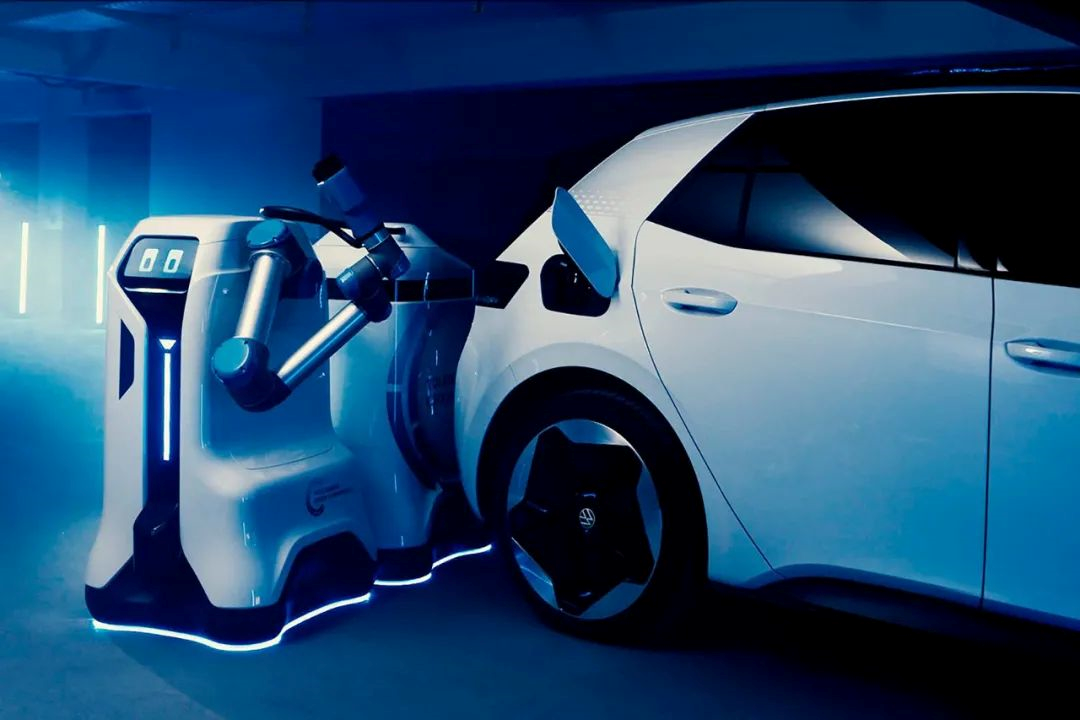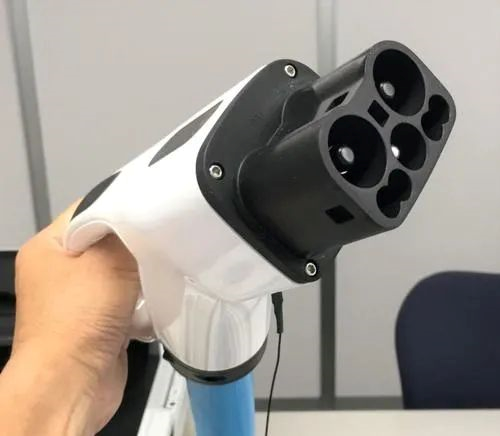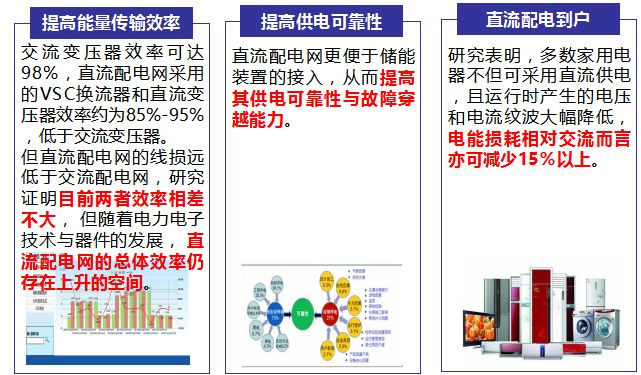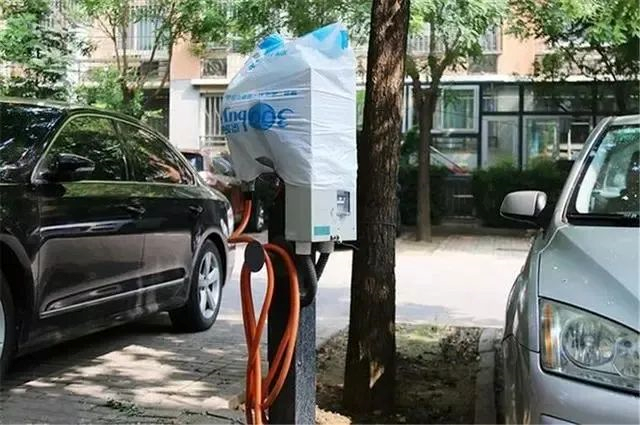Guest Author | Lin Wei
Editor | Qiu Kaijun
It seems increasingly difficult for electric vehicle owners to have their own charging station.
On February 24, the Shanghai Government officially issued the “Implementation Opinions on Further Promoting the Construction of Charging and Swapping Infrastructure in This City” (referred to as the “Shanghai Opinions”). Among them were phrases such as “the principle of ‘one station per community’ is no longer accepting individual installation of charging stations” and “the construction of charging facilities in old communities will be promoted in a coordinated manner with the principles of ‘one station for multiple vehicles’ sharing”. This sparked discussions among car owners.
Some car owners are concerned that with electric cars accounting for about 10% of the current vehicles in Shanghai, such a policy has been issued. Will other governments outside Shanghai “copy” the policy of the Shanghai Municipal Government after the proportion of electric cars increases in their regions? Will the dream of electric car owners being able to charge at home be shattered?
Indeed, before the “Shanghai Opinions,” the charging station construction policies in cities such as Chengdu used similar expressions. Although it still proposed the idea of “self-built and self-managed” for private charging stations, it also encourages charging operators to enter communities to build public chargers, and promote “uniform construction and management” and “orderly charging”. It can be seen that the opinions of the Shanghai government may be widely adopted, which is not unique.
Electric car owners, of course, want charging to be as convenient as possible. However, community managers and city managers cannot satisfy the requirements of all electric car owners.
Looking at the example of Shanghai, as the “most proactive” city in promoting the application of electric vehicles nationwide, it also needs to face the contradiction between “increasingly growing charging demand” and “limited distribution capacity of residential areas.” Other cities will also face this challenge after seeing the lessons learned from the Shanghai Municipal Government.
However, I believe that electric car owners, especially potential ones, do not need to be pessimistic. We may return to the basics and carefully consider what “community charging difficulties” actually means.
For most residential parking, the standard process is as follows: enter the parking space, there is a charging station beside the parking space with an AC charging gun; pick up the AC gun to charge the car at any time, and it will be fully charged overnight; the next day, leave with a fully charged electric vehicle from 7:00-9:00 a.m.
Examining every element of this process and its results, it can be found that every aspect can be changed:
- Parking spaces can be individually owned or randomly assigned.
- Charging stations can be self-built, publicly owned, or even direct current (DC).
- Charging can start at any time and doesn’t need to be fully charged, just charged enough for practical needs.
- Leaving with a full charge is also unnecessary; having enough charge for the day is sufficient.
When we break away from the shackles of “personal dedicated chargers” and “full charge” and look at the “difficulties of community charging”, it’s not that difficult after all.Actually, many solutions for charging electric vehicles in a community were listed in the “Shanghai Opinions”. The idea of “one car and one pile” has broken, but there are still many charging solutions. To put it in a familiar saying, “No matter if it is a black cat or a white cat, catching mice is a good cat.”
Now, let’s list the alternative solutions beyond “one car and one pile” and their feasibility regarding the “community charging demand”.
Single charging pile with multiple guns for multiple vehicles
This mode is probably the most intuitive idea for most readers after seeing the words “one pile and multiple cars sharing” in the “Shanghai Opinions”. It is also the simplest and easiest for construction, but the most difficult to implement in actual operation.
The reason is simple. There is only one gun head, corresponding to one or two parking spaces. For most electric vehicles on the market, the default setting is to lock the car after charging. If the charged vehicle is not unlocked, subsequent car owners will not be able to unplug the gun to change cars.
Furthermore, suppose there is only one available parking spot for servicing charging. In that case, subsequent car owners will not be able to “share” the charging resources without relocating the charged car.
Due to the long duration of low-power charging, if charging starts at 23:00, the filling time is usually between 2:00-4:00 in the morning. It is almost impossible to expect car owners to come and move their charged cars right away.
Single charging pile with multiple guns serves multiple parking spaces
Although the “Shanghai Opinions” emphasized “one pile and multiple cars sharing,” it did not state that one pile could only have one AC charging gun. Therefore, a charging pile can be equipped with multiple AC charging guns, and the power can be distributed to each controlled wire (and consequently each charging space) based on a certain strategy to share the power of one charging pile.
Essentially, this is the “smart charging pile” that the “Shanghai Opinions” mentioned. It distributes the limited power to each parking space, and each parking space can charge electric vehicles. However, the more cars share charging the longer each car’s charging duration will be.
In addition, there is another more straightforward and cheaper implementation strategy for “smart charging piles,” which employs time-sharing polling charging. The downside of this method is that the maximum AC charging power for each car is different, and therefore, time-sharing charging cannot ensure that the “rated power” of the charging piles is fully utilized. Additionally, the time-slicing polling may impose some level of inequality, making it less flexible.
A unified construction and management of community charging piles
Generally speaking, the process for electric car owners installing personal charging piles is as follows:
First, property owners should individually apply for private charging piles. After the utility company installs the meter, the property owner hires a licensed electrician to install cables and circuit breakers to the charging location and installs the charging pile.
However, the wiring for personal charging piles is generally in a star topology. When there are many charging pile projects, the number of cables will increase, and the garage ceiling or the community ground will not be able to sustain more private charging piles, let alone other constraints.Compared to other options, the unified construction and operation of charging stations by property management companies is actually the most worry-free solution for property owners. By using thick cables as the trunk and distributing power to the chargers through thin cables, centralized construction and installation can be performed, achieving the lowest single gun cost, the highest safety, and ensuring that each charging spot has a charging gun. With the charging guns available, private chargers are no longer allowed to be installed.
The disadvantage is that a majority of property owners must agree at a property owners’ meeting. When the proportion of electric vehicles in cities is less than 50%, the probability of such a motion being passed at a property owners’ meeting is low.
Mobile Charging Robots
News has reported that some companies have introduced charging robots that can move to electric vehicles on their own to charge them. The disadvantage is that they are expensive and cannot be widely promoted.

Charging on Behalf of Others
As the saying goes, if the technology isn’t up to par, then let the business compensate; when machines fail, let people take over. Like chauffeur services, high-quality residential property management companies can also offer charging on behalf of others services to shift the community’s charging needs to public fast charging stations.
Direct Current Microgrid
Considering the implementation of new technologies such as the ChaoJi super charging interface and modern power grids, there are new solutions for community charging.
Direct current microgrids are developed from the power conversion systems (PCS) that are commonly found in photovoltaic power plants, and feature centralized rectification (AC to DC) and inversion (DC to AC). After deploying a direct current microgrid in a residential community, the PCS can output 700-1000V DC, which can be transmitted to each parking space via a DC bus. Each parking space’s DC charger can obtain power from the bus, and output power to plug-in electric vehicles via DC-DC voltage and current conversion.
The advantage of direct current microgrid is that it can provide macro-level management of the entire residential community, automatically adjust the output power of each direct current gun, implement high voltage and low current charging, and ensure that the total power does not exceed the distribution capacity of the residential parking lot.
Although as previously mentioned, AC chargers can also “adjust the percentage of charging lead time for each AC gun and share the single charger’s power according to strategies,” this method may also cause charging interruption and some vehicle models may not be able to restart charging on their own.
However, the disadvantages are also obvious: direct current microgrids must use national standard DC guns or ChaoJi charging guns, so vehicles without DC charging ports cannot be serviced. Considering the cost of charging guns and supporting equipment, compared with directly adopting national standard AC chargers, the cost of constructing a direct current microgrid in a residential community is significantly higher.
Currently, direct current microgrids are a construction solution for direct current fast charging stations, and companies such as Ningde Times have been involved. The commonly seen “power module stack” with four to eight guns in the industry is a minimal form of direct current microgrid.
DC Power Distribution Network
The DC power distribution network is the direct connection of the DC busbar to the community by the power supply bureau, and it is an even more extensive application of the DC microgrid. If fully promoted, it will become a great achievement in the construction of new power grids in China.
Advantages of DC Power Distribution Network:

In terms of charging in communities, the DC power distribution network can achieve all the benefits of DC microgrids and can also save the PCS equipment of DC microgrids. In the community parking lot, there will no longer be a need for rectification (AC→DC). When all vehicles are charging, direct current charging will be considered “natural”.
The most crucial thing is that since the DC power distribution network is a newly built distribution network, the distribution capacity is only limited by the DC busbar, and there is no longer a capacity limit caused by transformers. The distribution capacity relative to the AC power distribution network of the community will be greatly improved. In addition, DC charging can be controlled by groups, and the charging current of each gun can be easily adjusted, which will improve the overall charging experience of the community.
V2G2V: From Vehicles to Grid and Back to Vehicles
In “The Three-Body Problem,” there is a sentence spoken by the Trisolarans:
“The food? Isn’t this all food? Look around you, every person is food, living food.”
What is the inspiration for readers? That’s right. Actually, if we open up our minds a bit, we will find that in the scene of community charging, there are naturally a large number of energy storage carriers-electric vehicles. In the future, through DC power grid and V2G technology, the community itself does not need to deploy expensive energy storage devices that occupy building space, but dynamically allocates the electric energy in the battery packs of various vehicles, similar to managing a large number of water tanks with inconsistent water storage capacity.
The vehicles that return to the community earlier are charged first. When the vehicles that return to the community later need to be charged, the electric energy comes from the DC busbar, which can come from the distribution network or from electric vehicles in the community that are fully charged and support V2G.
It has been suggested that V2G2V energy needs to be converted three times, and some people suggest allocating charging according to the urgency of demand.
For example, a decoration boss suggested using an economic lever to dynamically adjust the charging price to force people to adjust the charging time. For example, charging after 3 am will be cheaper in terms of electricity price or charging service fees.
Regarding this matter, the author believes that this economic lever cannot be implemented. This is because human economic behavior is determined by individual decisions. In the community charging scenario, the dynamically variable charging costs will cause car owners to panic.And, whether it is human or computer decision-making, there will be a execution time, resulting in unexpected results. A typical example is the frequently encountered “green road is congested” situation in vehicle navigation: drivers on the road see a green side road with no traffic, and all take this non-congested path, resulting in a large influx of traffic and the green road becoming congested in a moment.
How should economic leverage be used? We need to return to the V2G2V scenario. Let’s think about it again. Is the “full charge departure the next day” demand a true demand? Can the vehicle owner’s SOC requirement for leaving the house be reduced if they are given some benefits, such as leaving with 90% or 80% battery life?
Vehicle owner: Of course, it requires compensation!
In fact, in urban scenarios, a large part of pure electric cars leave the house with 80% battery life and have enough power to commute all day and return home in the evening, with 30% or more battery life remaining.
Therefore, as long as the vehicle owner who fully charges the vehicle at night agrees to sell 10%-50% of the battery pack’s power to the power grid or charging operator through V2G technology, the owner can get a certain amount of income. The power grid or charging operator can flexibly formulate the purchase price strategy of electricity, achieving economic leverage.
On the vehicle owner’s side, they only need to set the SOC value for V2G battery discharge, such as 50%-90%, and then “post” the minimum selling price. With the help of V2G technology, the vehicles can adjust the power usage, and the available charging power for the entire community will be greatly increased.
Conclusion: Solving problems in development
This article lists 8 community charging solutions, which have varying feasibility, but for “community charging difficulties”, there are always more solutions than difficulties. In addition, with the advancement of technology and the development of the industry, more and more solutions are emerging.
Many people do not know that when air conditioning became popular, it also caused tremendous challenges to the electrical capacity of communities. Nowadays, it is no longer a problem for every household to install high-power appliances like air conditioners.
The difficulty of community charging is only temporary. In the era of fully electrified cars, people will look back and laugh at today’s obstacles: what was once so difficult is now easily solved.
This article is a translation by ChatGPT of a Chinese report from 42HOW. If you have any questions about it, please email bd@42how.com.
